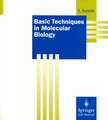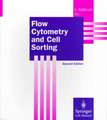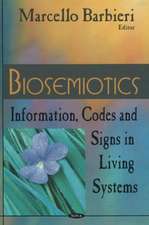Nucleic Acids in the Environment: Springer Lab Manuals
Editat de Jack T. Trevors, J. Dick van Elsasen Limba Engleză Paperback – 28 apr 1995
Detailed protocols for these applications are described in this manual.
Din seria Springer Lab Manuals
-
 Preț: 385.84 lei
Preț: 385.84 lei -
 Preț: 362.59 lei
Preț: 362.59 lei - 18%
 Preț: 973.69 lei
Preț: 973.69 lei - 15%
 Preț: 695.85 lei
Preț: 695.85 lei - 18%
 Preț: 997.40 lei
Preț: 997.40 lei -
 Preț: 385.84 lei
Preț: 385.84 lei -
 Preț: 382.18 lei
Preț: 382.18 lei - 24%
 Preț: 1045.08 lei
Preț: 1045.08 lei - 15%
 Preț: 641.20 lei
Preț: 641.20 lei - 18%
 Preț: 939.33 lei
Preț: 939.33 lei -
 Preț: 381.43 lei
Preț: 381.43 lei - 15%
 Preț: 637.59 lei
Preț: 637.59 lei -
 Preț: 376.68 lei
Preț: 376.68 lei - 18%
 Preț: 1827.80 lei
Preț: 1827.80 lei - 18%
 Preț: 953.82 lei
Preț: 953.82 lei - 15%
 Preț: 645.14 lei
Preț: 645.14 lei - 15%
 Preț: 695.53 lei
Preț: 695.53 lei - 23%
 Preț: 821.58 lei
Preț: 821.58 lei - 19%
 Preț: 588.70 lei
Preț: 588.70 lei - 5%
 Preț: 727.44 lei
Preț: 727.44 lei - 18%
 Preț: 1225.31 lei
Preț: 1225.31 lei - 15%
 Preț: 657.39 lei
Preț: 657.39 lei - 18%
 Preț: 949.73 lei
Preț: 949.73 lei -
 Preț: 386.99 lei
Preț: 386.99 lei - 15%
 Preț: 657.25 lei
Preț: 657.25 lei - 19%
 Preț: 555.62 lei
Preț: 555.62 lei -
 Preț: 380.63 lei
Preț: 380.63 lei - 18%
 Preț: 1226.11 lei
Preț: 1226.11 lei - 15%
 Preț: 649.22 lei
Preț: 649.22 lei - 15%
 Preț: 632.55 lei
Preț: 632.55 lei - 19%
 Preț: 584.76 lei
Preț: 584.76 lei - 15%
 Preț: 639.41 lei
Preț: 639.41 lei - 15%
 Preț: 644.82 lei
Preț: 644.82 lei -
 Preț: 390.25 lei
Preț: 390.25 lei - 18%
 Preț: 781.31 lei
Preț: 781.31 lei - 15%
 Preț: 644.63 lei
Preț: 644.63 lei -
 Preț: 382.36 lei
Preț: 382.36 lei -
 Preț: 363.12 lei
Preț: 363.12 lei - 18%
 Preț: 961.23 lei
Preț: 961.23 lei -
 Preț: 416.29 lei
Preț: 416.29 lei - 18%
 Preț: 783.35 lei
Preț: 783.35 lei - 18%
 Preț: 791.88 lei
Preț: 791.88 lei - 15%
 Preț: 675.22 lei
Preț: 675.22 lei - 23%
 Preț: 1311.54 lei
Preț: 1311.54 lei -
 Preț: 381.43 lei
Preț: 381.43 lei
Preț: 639.25 lei
Preț vechi: 752.06 lei
-15% Nou
Puncte Express: 959
Preț estimativ în valută:
122.34€ • 127.39$ • 103.39£
122.34€ • 127.39$ • 103.39£
Carte tipărită la comandă
Livrare economică 11-25 martie
Preluare comenzi: 021 569.72.76
Specificații
ISBN-13: 9783540580690
ISBN-10: 3540580697
Pagini: 272
Ilustrații: XII, 260 p. 11 illus.
Dimensiuni: 155 x 235 x 14 mm
Greutate: 0.39 kg
Editura: Springer Berlin, Heidelberg
Colecția Springer
Seria Springer Lab Manuals
Locul publicării:Berlin, Heidelberg, Germany
ISBN-10: 3540580697
Pagini: 272
Ilustrații: XII, 260 p. 11 illus.
Dimensiuni: 155 x 235 x 14 mm
Greutate: 0.39 kg
Editura: Springer Berlin, Heidelberg
Colecția Springer
Seria Springer Lab Manuals
Locul publicării:Berlin, Heidelberg, Germany
Public țintă
ResearchCuprins
1 Introduction to Nucleic Acids in the Environment: Methods and Applications.- 1.1 Introduction.- 1.2 Cell Lysis, Nucleic Acid Extraction and Purification Protocols.- 1.3 Analysis of Environmental Nucleic Acids.- 1.4 Concluding Remarks.- References.- 2 Recovery of Bacterial Cells from Soil.- 2.1 Introduction.- 2.2 Strategies for Cell Extraction.- 2.3 Recommended Methods.- 2.4 Practical Experiences and Recommendations.- References.- 3 Extraction, Purification, and Analysis of DNA from Soil Bacteria.- 3.1 Introduction.- 3.2 Bacterial DNA.- 3.3 Direct Extraction of DNA from Soil.- 3.4 Purity Control and Characterization of Soil Bacterial DNA.- References.- 4 Extraction and Analysis of Microbial DNA from Soil.- 4.1 Introduction.- 4.2 DNA Extraction Methods.- 4.3 Evaluation of DNA Extraction Methods.- 4.4 Methods for Analysis of DNA from Soil.- 4.5 Concluding Remarks.- References.- 5 Extraction and Amplification of DNA from the Rhizosphere and Rhizoplane of Plants.- 5.1 Introduction.- 5.2 Sample Preparation.- 5.3 Extraction, Purification and Quantification of DNA from the Rhizosphere.- 5.4 PCR Analysis of Bacterial DNA from the Rhizosphere and Rhizoplane of Plants.- 5.5 Concluding Remarks.- References.- 6 Extraction of DNA from the Phyllosphere.- 6.1 Introduction.- 6.2 Materials, Methods and Protocols.- 6.3 Concluding Remarks.- References.- 7 Specific DNA Sequences for Detection of Soil Bacteria.- 7.1 Introduction.- 7.2 Objectives and Limitations.- 7.3 Target DNA, DNA Extraction and Detection in Soil.- 7.4 Detailed Procedures.- 7.5 Application of Methodology.- References.- 8 PCR Amplification of DNA from Root Nodules.- 8.1 Introduction.- 8.2 Methods for Detection of Rhizobia.- 8.3 Detection of Root Nodule Bacteria by PCR.- 8.4 Conclusions.- References.- 9 Extraction of DNA and RNA from Aquatic Environments.- 9.1 Introduction.- 9.2 DNA as a Biomass and Ecological Indicator.- 9.3 RNA as a Biomass and Ecological Indicator.- 9.4 Biomass and Activity Measurements of Aquatic Microorganisms using RNA and RNA /DNA Ratios.- 9.5 Extraction of Nucleic Acids for Molecular Biological Studies.- 9.6 Molecular Methods for Studying RNA in Aquatic Environments.- 9.7 Extraction of DNA from Aquatic Microbial Populations.- 9.8 Extraction of RNA from Aquatic Microbial Populations.- References.- 10 PCR Amplification of DNA Recovered from the Aquatic Environment.- 10.1 Introduction.- 10.2 Concentration of Water Samples from Aquatic Environments.- 10.3 Sample Preparation for PCR Amplification.- 10.4 Processing of Dissolved DNA in the Aquatic Environment.- 10.5 Processing of Nucleic Acids from Biofilms.- 10.6 PCR Amplification.- 10.7 Identification and Analysis of the Amplified DNA.- 10.8 PCR Contamination Control.- 10.9 Enhancing the Specificity of the PCR Reaction.- 10.10 Use of Arbitrarily Primed PCR (Ap-PCR) in Environmental Microbiology.- 10.11 In situ PCR Amplification.- 10.12 The Use of PCR in Aquatic Environments.- 10.13 Detection of Viruses in Water.- 10.14 Discussion.- References.- 11 Extraction and Amplification of 16S rRNA Genes from Deep Marine Sediments and Seawater to Assess Bacterial Community Diversity.- 11.1 Introduction.- 11.2 DNA Extraction.- 11.3 Amplification of 16S Ribosomal RNA Gene Sequences.- 11.4 Cloning and Sequencing.- 11.5 Sequences Obtained from Marine Sediments and Coastal Waters.- References.- 12 Application of the PCR for Detection of Antibiotic Resistance Genes in Environmental Samples.- 12.1 Introduction.- 12.2 Selection of PCR Primers and Gene Probes for Specific Detection of sat and nptII Genes.- 12.3 Detection of Antibiotic Resistance Genes in Bacterial Isolates Using PCR.- 12.4 Detection of Antibiotic Resistance Genes Using DNA Extraction and PCR.- 12.5 Detection of Antibiotic Resistance Genes in Total Community DNA Extracts from Environmental Habitats..- 12.6 Conclusions.- References.
Recenzii
"The protocols that are presented are well defined in a step-by step manner. This should allow their easy implementation in a laboratory. An attractive feature ... is the inclusion of a series of tables with suggested primers for analysis of specific genes." Quarterly Review of Biology






